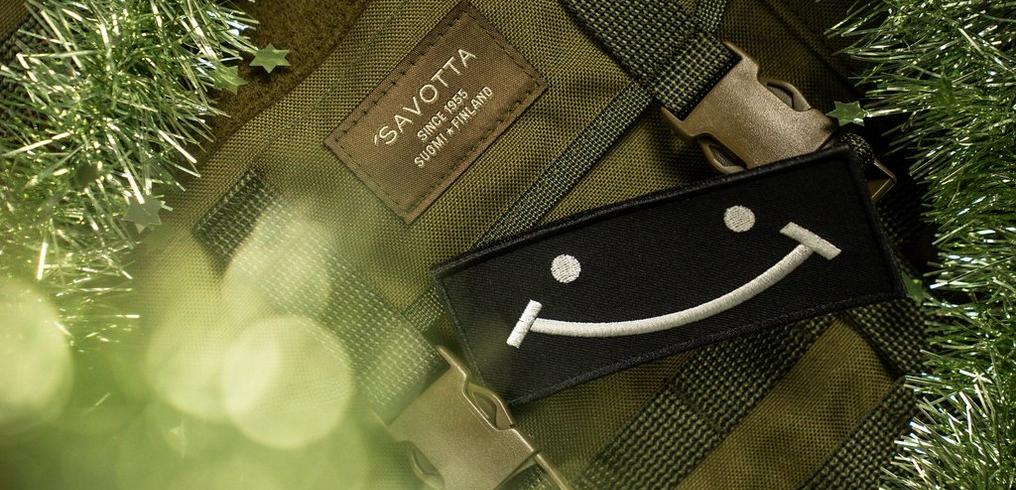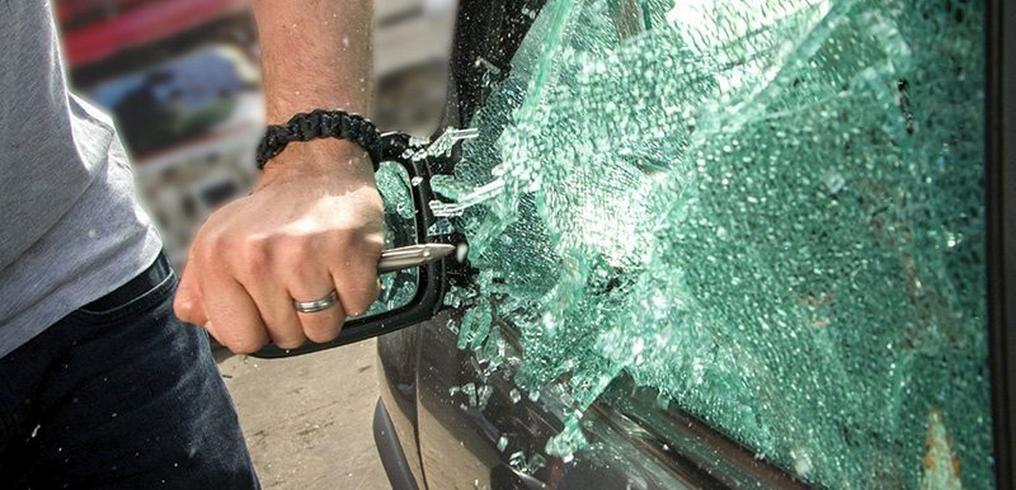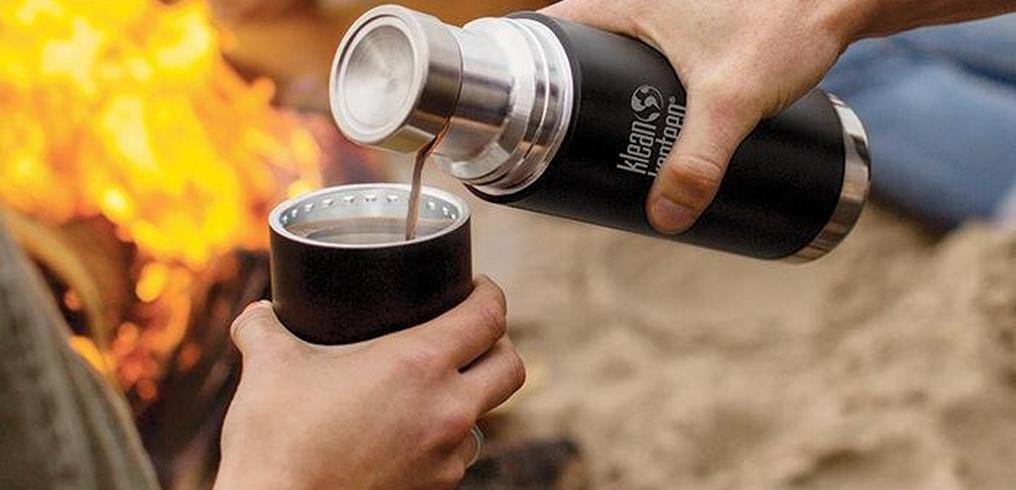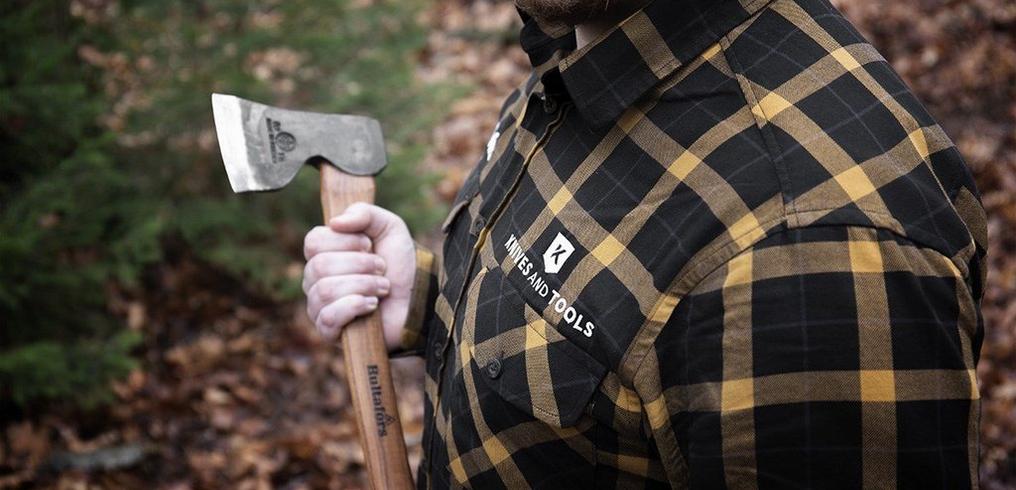Silky vs. Agawa Canyon | Review by Padraig Croke
The humble saw... When it comes to bushcraft and outdoor tools, it’s often seen playing second fiddle to its much cooler older brother, the woodsmans axe. But the world of saws, like most specialist tools, has a plethora of choices and options available, and it could be easy to get caught up in the debates that float around on the forums about which saws are better and why. So, rather than adding to that cloud of debate, it is perhaps more useful to take a look at the advantages and disadvantages of certain types of saws, and why we would choose to carry one type over the other. This article will focus on two types of saw we most commonly find in bushcraft kits, the folding pocket saw (Silky Gomboy), and the collapsible bow saw (Agawa Canyon Boreal 21).
What are you going to be using your saw for?
For the last few years I have been intermittently switching between both of these saws and I can honestly say that I love both, but for different reasons. They both have their place in the outdoors world, but if you are looking at purchasing a new saw, then there are some factors that need to be understood before making your decision. How wide the gaps are between the teeth, the thickness of the kerf (gap) created by the saws teeth in the wood, and at what angle the teeth are set to (rake) are all elements of a blade that need to be considered, so we can make our choices with a basic understanding of what we need our saw to do.
Greenwood or Drywood?
The first thing to consider is whether you cut mostly green wood or dry wood. Green wood blades are going to be predominantly used by sloyd and green woodworkers, or people pruning their garden or woodland, whereas drywood blades are for carpentry and joinery, as well as firewood processing and cutting dried logs. A greenwood blade has a much wider set of teeth, combined with a raker after every 4 or so teeth. This raker is designed to remove the greenwood dust and pulp from your saws cut, preventing it from clogging and restricting your cutting. A drywood blade doesn’t need this, and this raker will not be included. The technical elements get a little more detailed than this, and there is a world of nuance in these choices alone. But as a rule of thumb, this would be the first place to start when considering a saw blade.
Push and Pull
The other main consideration when choosing a blade type is rake style. This is the angle the teeth of the blade are set to, and ultimately will determine whether the blade cuts on the push or the pull of the saws motion when you are using it. A standard bow saw will generally be set at a 30 degree angle on both sides of a tooth, meaning it cuts equally on both the push and the pull motion and allows for you to use it comfortably when your log is on a sawhorse. The downward pressure of a push cut will secure your log to the sawhorse, but a pull cut will slightly lift it. A standard bow saw blade is a jack of all trades type blade, and is not particularly specialised to any one particular use. Then you have a Japanese pull saw, like the Silky Gomboy we are using here, its teeth are set at a much more aggressive angle so as to only make a cut when the user is pulling the blade back towards them. The forward motion should only be skirting across the cut and clearing it of any dust or pulp that would hinder a clean cut. This pull cut motion will make the blade much easier to use at awkward angles or when you are attempting to cut things at a height, applying a cutting pressure into your material with little effort needed. There is also the option of having a curved blade over a straight one, ensuring consistent contact with the material being cut, but we will get into that more once we are discussing the saw.
Silky Gomboy Pruning Saws
Silky is a Japanese company who claim to have been around for the last 100 years. They specialise in making extremely high quality precision cutting tools for forestry workers and arborists. The Gomboy product range which we are looking at in this article have been around since the mid 80’s and have stood the test of time, known for their build quality and engineering. Both the 210 and 240 curve models are exceptional. Whether it’s getting through some medium sized logs for the fire, or for taking a green hazel shoot, its performance is such a joy to see in action. This saw is considered a multifunctional saw, and can be used for various outdoor purposes.
210 straight blade
The straight blade of the 210 is in my opinion, one of the cleanest cutting saws on the market today. At 210mm, with 10 teeth per 30mm, each tooth on the blade has 4 cutting surfaces and they are configured in a non-set setup. This makes the blade extremely fast when cutting through material, and the angle set on these blades make the pull cut almost effortless, allowing the blade to do the work. It never seems to bind or get stuck due to clogging or buildup. As we talked about earlier in this article, the beauty of a pull saw means that very little effort or pressure is required, allowing the teeth to do their work.
The handle is configured in such a way also, that the pommel end allows for very powerful cuts, with your hand at the back end creating the pressure in the pull cut. Its rubberised handle is very comfortable, suitable for all day usage. For more precise and shallower cuts, simply move your hand up closer to the blade end to relieve some of the pressure. This is a very effective technique with pull saws, however, the downside of this is that using this kind of saw takes a little bit of practice, and I have seen people snap the blades very easily on these due to improper technique. The blades are quite expensive to replace on these saws, so if you are new to using a Silky, I highly recommend that you take it slow and get used to how it feels. The straight blade version of this saw is great for bushcraft and green woodworking. It makes clean and precise cuts and will fold nice and compact in your pack or outdoor trousers pocket. Perhaps not the best tool to use for large logs, but saying that, it will usually handle most camp craft tasks I throw at it.
240 Curved Blade
This saw is very similar to the straight blade, but with a few advantages. Firstly it is slightly longer, and so each pull stroke will give you a little more cutting time. The longer handle also means the pressure from your cuts will be that little more intense, and therefore makes for a speedier cut. The downside of this is that the cut is perhaps less precise, and would be a little more difficult to manage for short or shallow cuts you may be trying to achieve. The curvature of the blade has been set up to allow for you to retain a consistent pressure and contact with the log or branch that you are cutting, and works fantastically for hard to reach jobs and for cuts that need to be made at height where you have to reach up, a motion that will very quickly tire your arm out.
Two position setup
Almost all Silky folding saws can be used in two lock settings. By pressing your thumb on the spring-loaded blade lock the blade can be hyper-extended in a position that allows for it to be used with branches or logs close to the ground without scraping your knuckles using the saw. Personally I have never needed to use this feature, but I can absolutely see how this would be a useful feature for some.
Summary of Silky Saws
Advantages
- Interchangeable blades for straight and curved options
- Comfortable and ergonomic design for all day use
- Clean and precise cutting power
- Extremely compact
- Changing blades is fast and easy
Disadvantages
- Blades are expensive to replace
- Takes a little bit of time to get used to the technique
- Not suitable for very large logs
Agawa Canyon Boreal 21
On the other side of the coin, we have a completely different type of saw. Based out of Canada, Agawa Canyon are a small company producing an exceptional little tool. The Boreal 21 saw. Tried and tested by some of the biggest names in bushcraft, it has proven to be a reliable and sturdy tool, even in the freezing temperatures of North America and Canada. So how does it compare to the Silky?
Jack of all trades
The Boreal 21 is much closer to what some might consider and all round woodsmans saw. Whether you’re a hunter, a backpacker or bushcrafter, the Boreal is without a doubt going to be able to deal with the task, and I will get into that shortly.
The aluminium frame is sturdy and robust, and the overall design has a ‘no nonsense’, ‘straight to the point’ construction. If the Silky saws feel like Japanese products, then the Boreal 21 absolutely feels like a Canadian product, built by people who use these tools themselves. Engineered to work as a single piece, the saw unfolds and ensembles in seconds, and there are no loose parts to get lost or fiddle with. The snap lock at the back is made from fiberglass reinforced nylon and retains perfect tension on the blade at all times, even when making lateral cuts.
Packable and (somewhat) Compact
When it comes to packability, the boreal is similar in concept to the Silky, in so far as the sheath or cover for the saw is its own handle, making for a self contained system that has no parts removable or separate. Granted, the Silky does come with a plastic sheath that fits on the belt, I find the saw more accessible simply folded and put in the pocket.
Agawa Canyon state that the Boreal is compact and lightweight, but personally I find this to be a bit of an overreach. Yes it’s compact, but only as compact as a 21 inch bow saw can be. Saying that! What you are getting for that space and weight is an exceptionally well-built tool, that will slide neatly into your pack and will provide you with some seriously heavy cutting power when it’s called upon. The construction of the Boreal 21 also gives you a very high clearance above the blade, meaning you can cut through large diameter logs of up to 6 inches without having to rotate or come at it from a different angle. A bow saw has its restrictions in that it can only cut as deep as the frame is high, but the Boreal 21 does give you just as much, if not a little more clearance, than what you might find on a standard single piece bow saw.
The right blade for the right job
The beautiful thing about a bow saw like this is that it can customised with the right blade to suit exactly what you need it for. Agawa Canyon stock 4 different blade types on their webshop, but honestly any blade designed for a 21 inch bow saw will work with the Boreal. The standard green wood blade and dry wood blades that we discussed at the beginning of this article are readily available, and the Agawa Canyon ones are made in Sweden. This leads me to believe that they are more than likely unbranded Bacho bow saw blades, the type that any good hardware store will keep in stock.
The other two blades available are a hunting bone saw blade, perfect for processing game, and the The Sidney Rancher Blade. The Rancher is custom designed and favoured by those seeking an extremely aggressive and long lasting blade. Long sharp edges in a unique pattern of large teeth provide aggressive cutting, meaning it will plough through wood fast. This is perhaps a blade that would be useful in colder climates, where the trees are frozen hard and require a more aggressive blade to get through them. It also features hardened points and push/ pull cutting action.
Replacing the blade is relatively simple, and requires no unscrewing to change. However the parts are small and would be easy to misplace if not taken care of.
Summary of the Boreal 21
Advantages
- Replacing blades is inexpensive, as high quality hardware store blades will fit perfectly
- Foldable and compact for the cutting power available
- Sturdy construction, this tool will most likely never break on you in the field
- Extremely modular and useful for many different tasks
- Capable of processing large logs
Disadvantages
- Lacks the finesse of the type of cuts possible with a silky
- Not suitable for intricate camp crafting or sloyd work
- Although compact for a bow saw, it is still somewhat bulky in the pack, with the top jutting out of any pack shorter than it
- Can get a little uncomfortable in the hand with prolonged use
Which are you going to go for?
So as we can see, the choices available to a woodsman vary greatly, and really there is no ‘better’ tool, only the one that suits your needs. If you are the type of outdoors person that uses their saw for cutting large logs to get a roaring fire going in the winter months, or perhaps you need something that can cut through the leg of a deer, then perhaps the capabilities of the bow saw is more in line with your needs. If you’re someone who travels fast and light, needing a precise cutting tool for making camp furniture, hunting and fishing traps, or even some cooking utensils, then maybe the Silky is more suitable to you. I have personally used both of these tools for many years now, and although there are other makes and models out there on the market, in my opinion you would be hard-pressed to find something that can replace these options. Put in the right hands, the saw is one of the most powerful tools a woodsman can utilise.
Padraig Croke
Padraig Croke is the host of the outdoors podcast Trial by Fire, which ran from 2018-2023. A graphic designer and photographer by day, as well as an avid outdoorsman and bushcraft enthusiast, when he's not writing for us he's usually out in the field making film or taking photographs.

You can find his work at www.padraig.me or by following him on instagram @padraigcroke
Thanks, Padraig, for this awesome review!
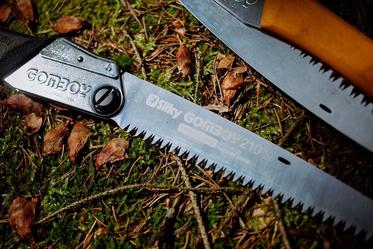
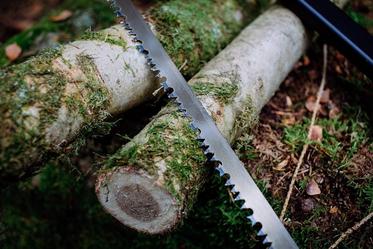

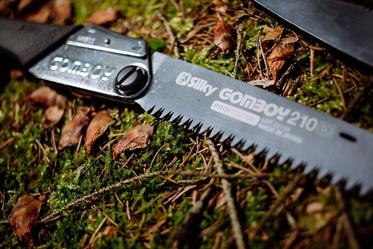
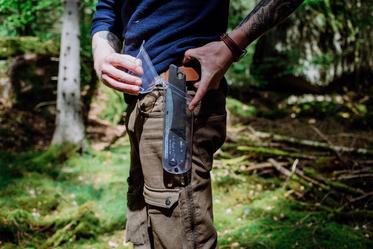
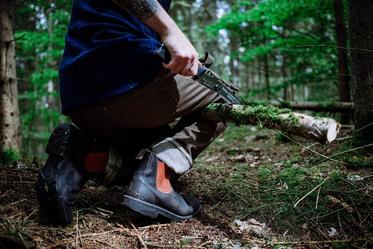

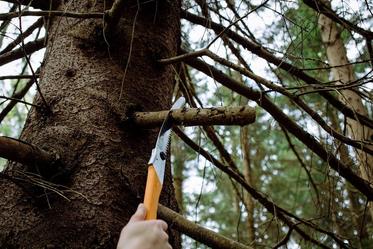
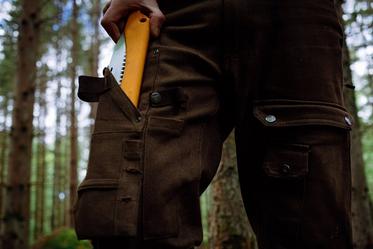
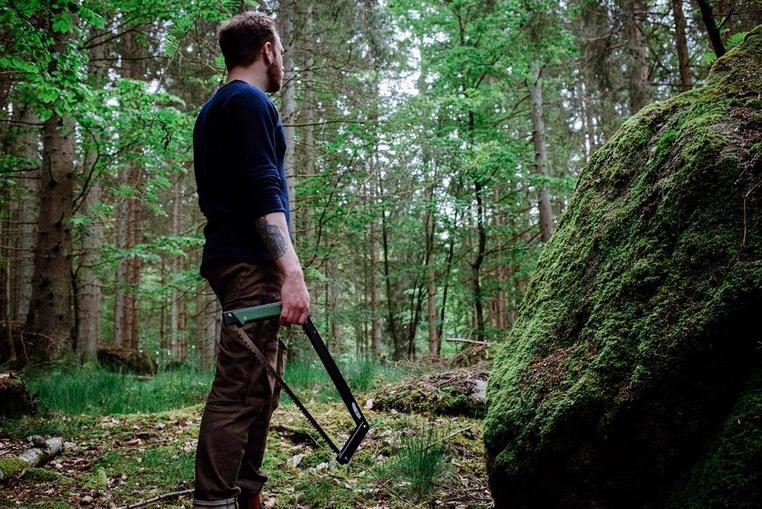
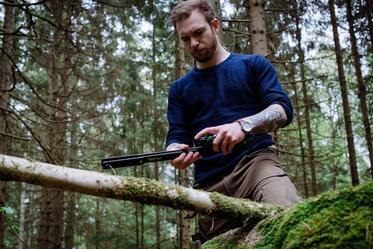
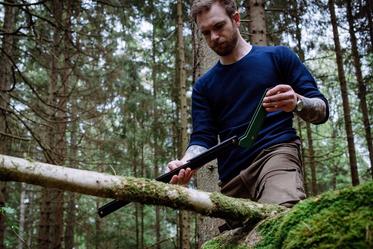
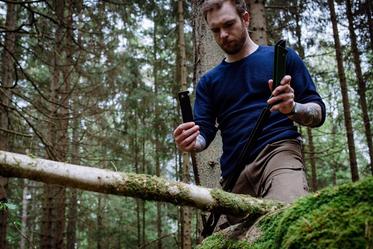
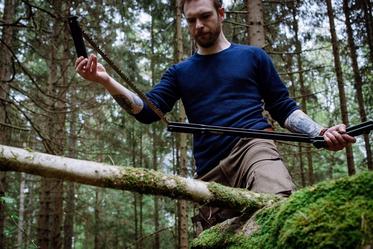
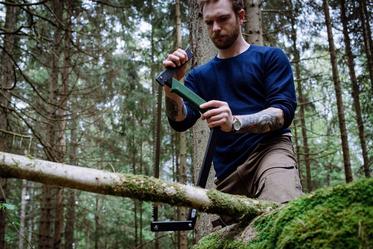
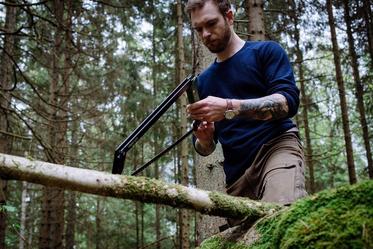
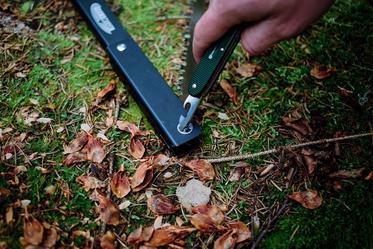
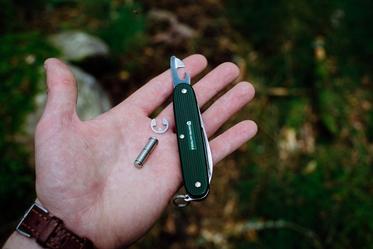



?%24center=center&%24poi=poi&%24product-image%24=&fmt=auto&h=490&poi=%7B%24this.metadata.pointOfInterest.x%7D%2C%7B%24this.metadata.pointOfInterest.y%7D%2C%7B%24this.metadata.pointOfInterest.w%7D%2C%7B%24this.metadata.pointOfInterest.h%7D&scaleFit=%7B%28%24this.metadata.pointOfInterest%29%3F%24poi%3A%24center%7D&sm=c&w=1016)


